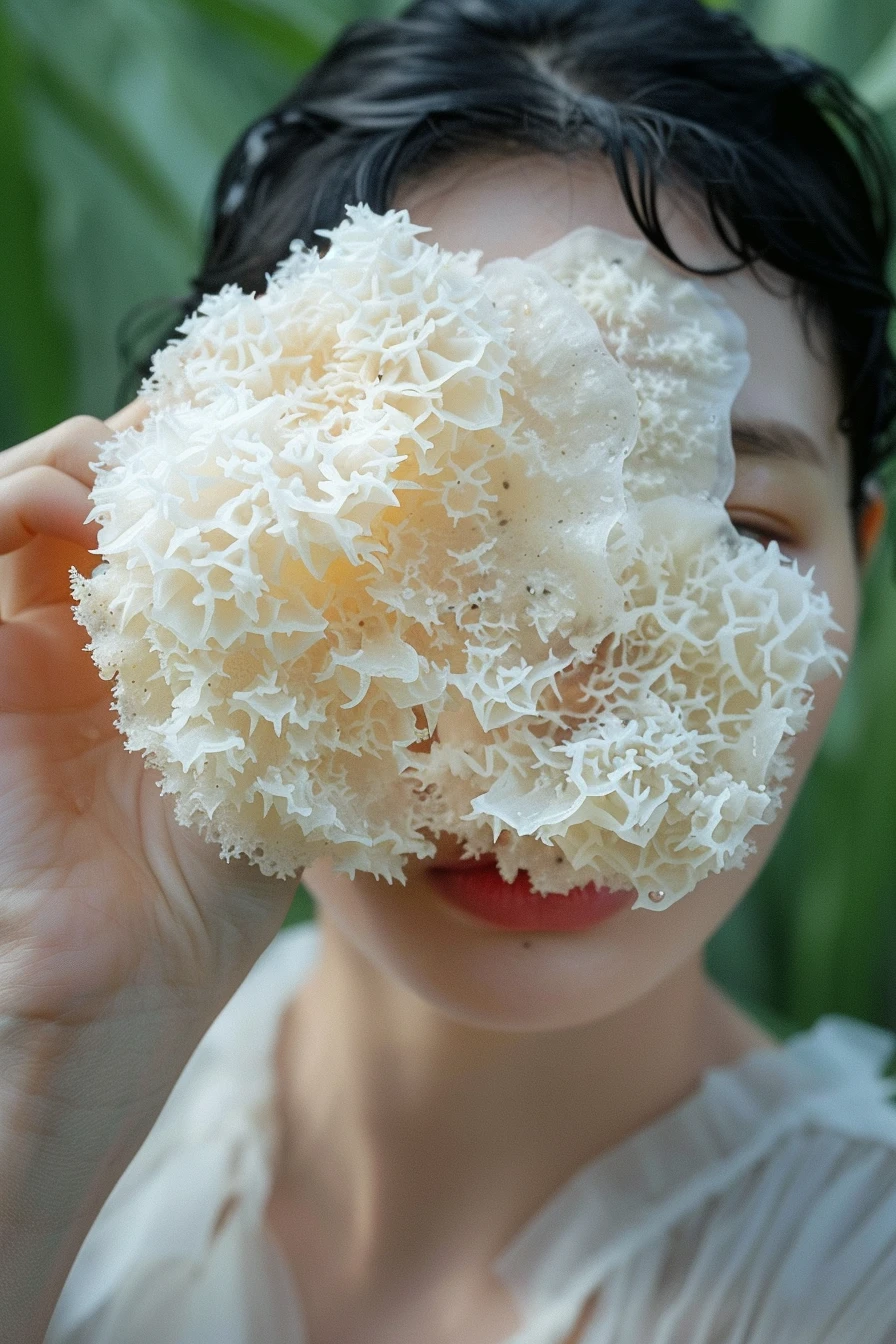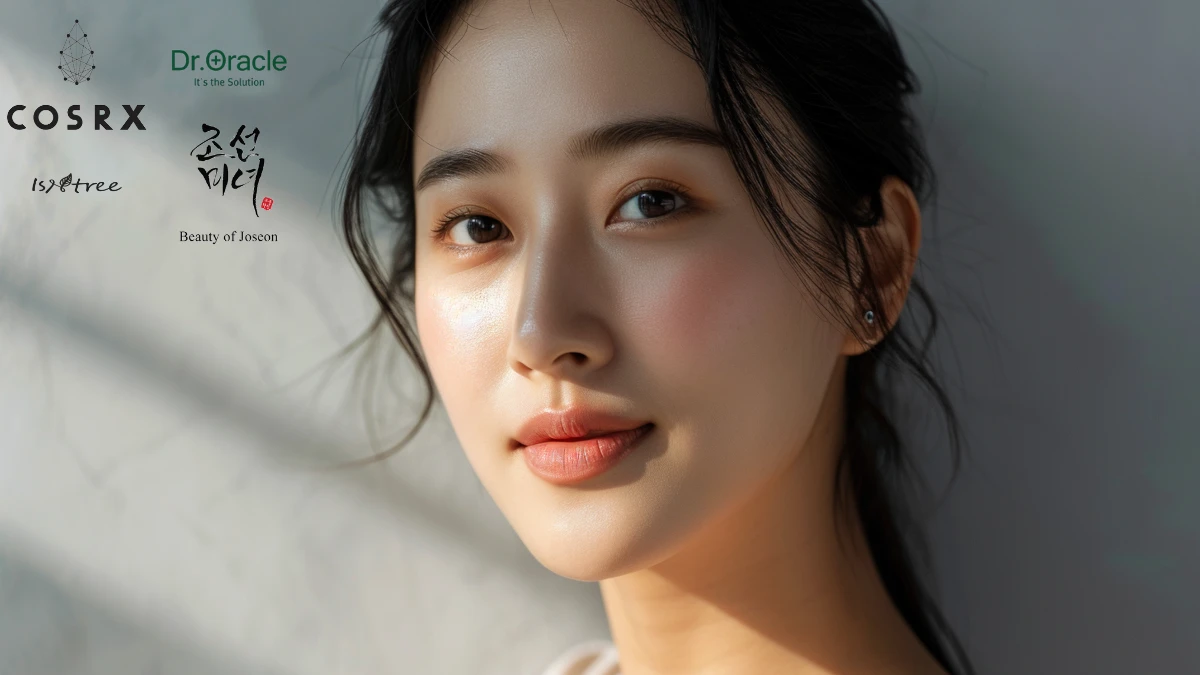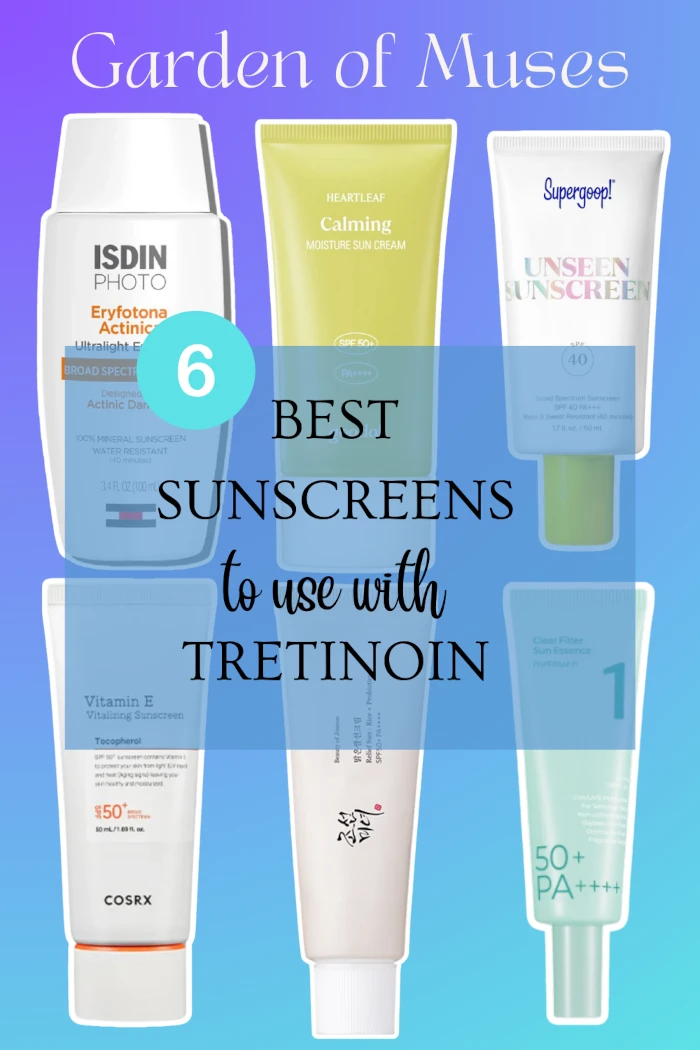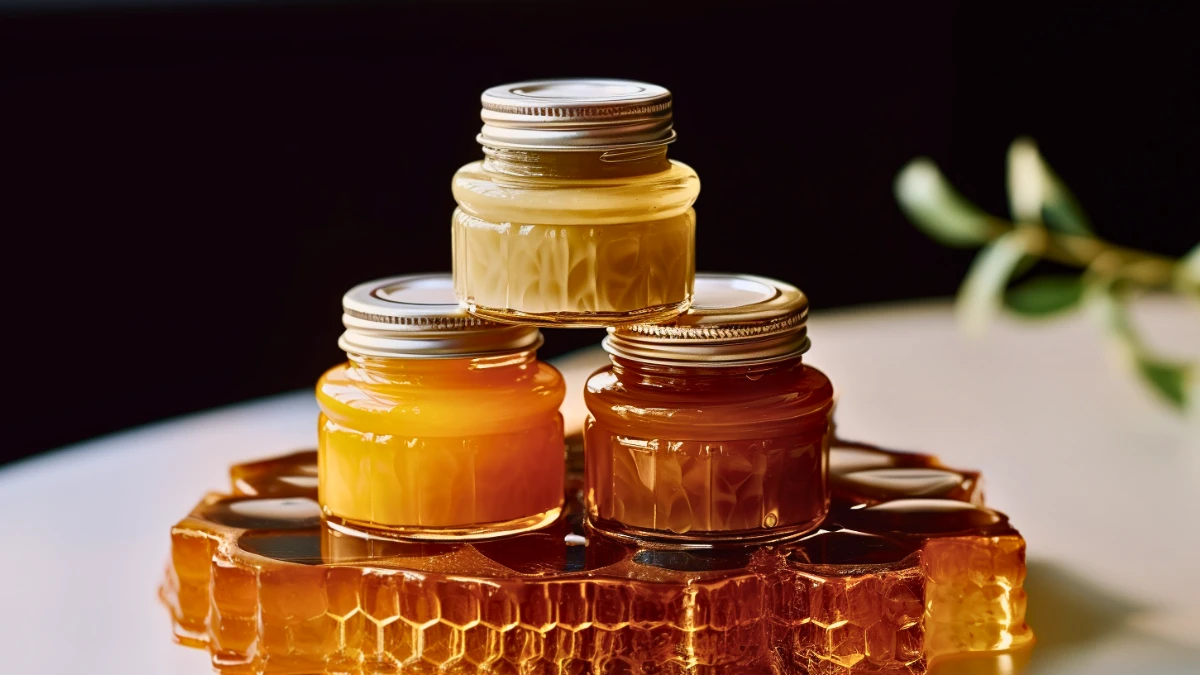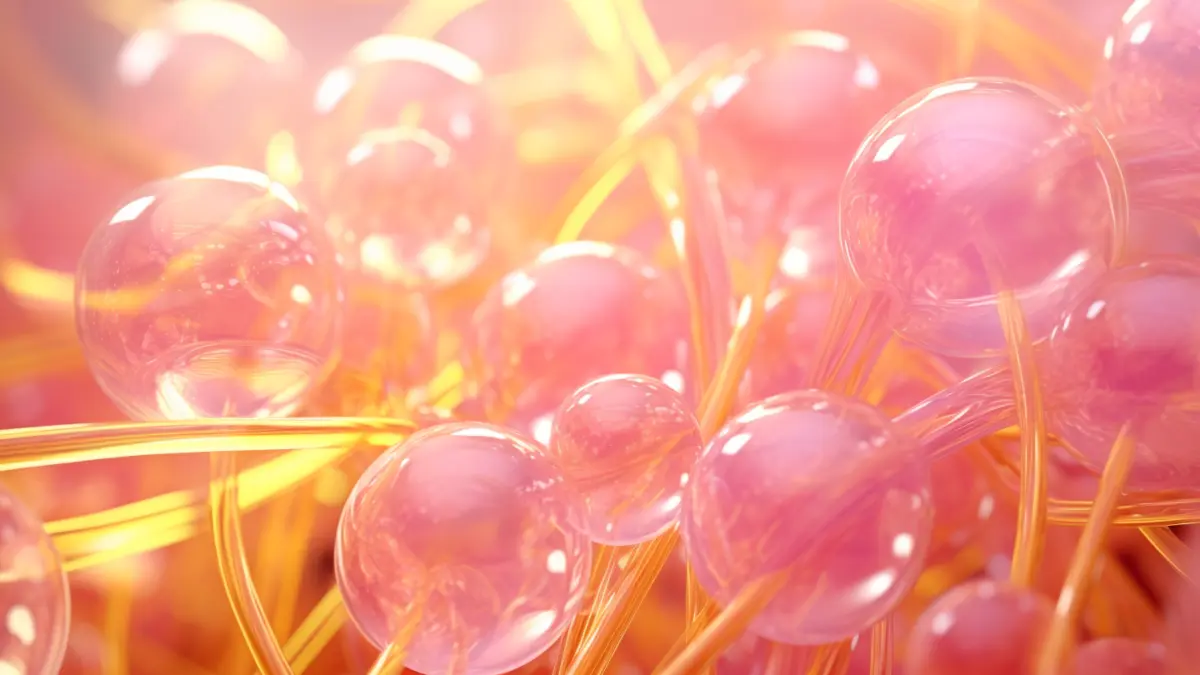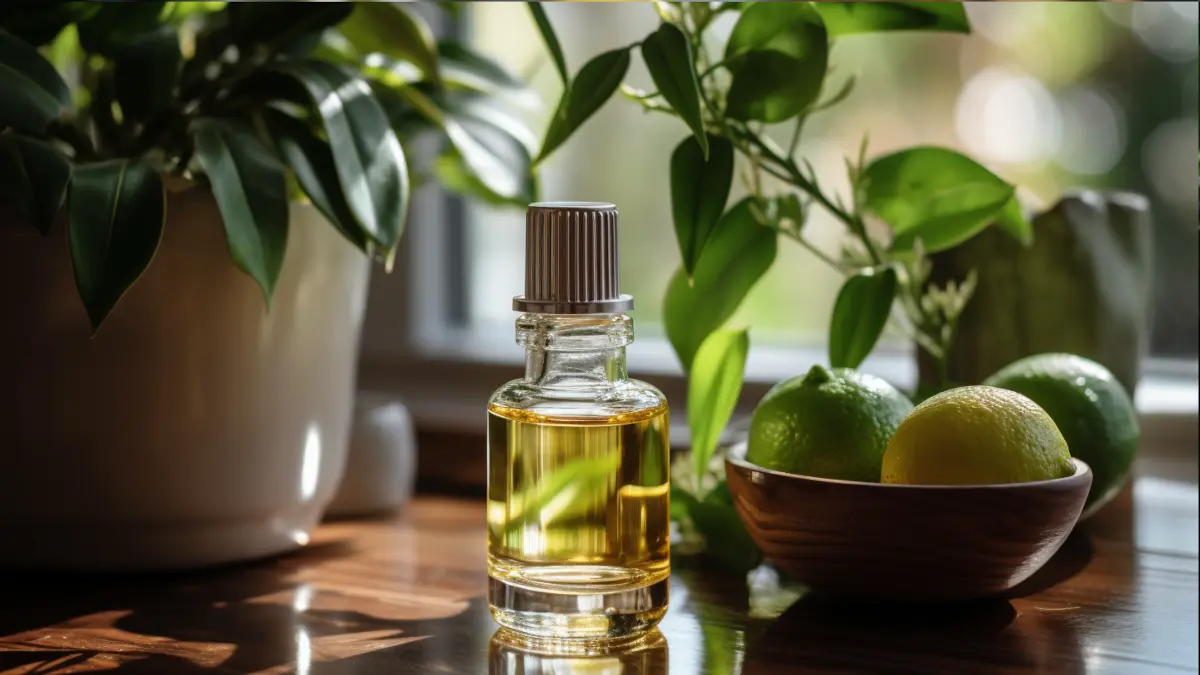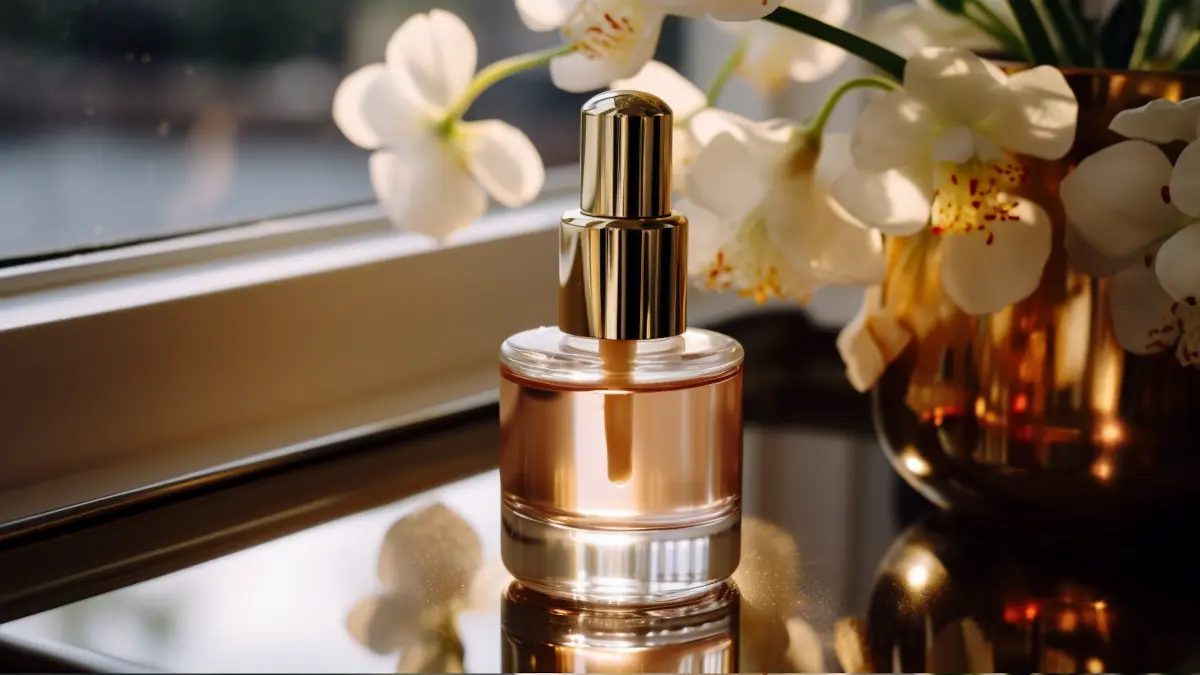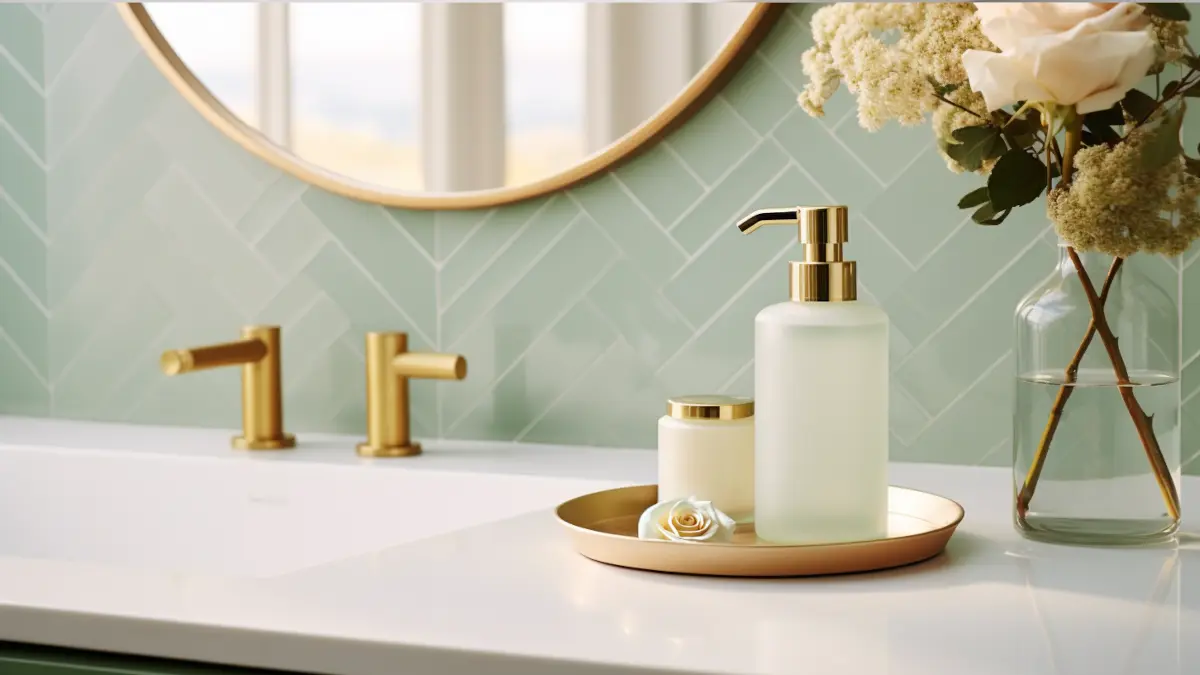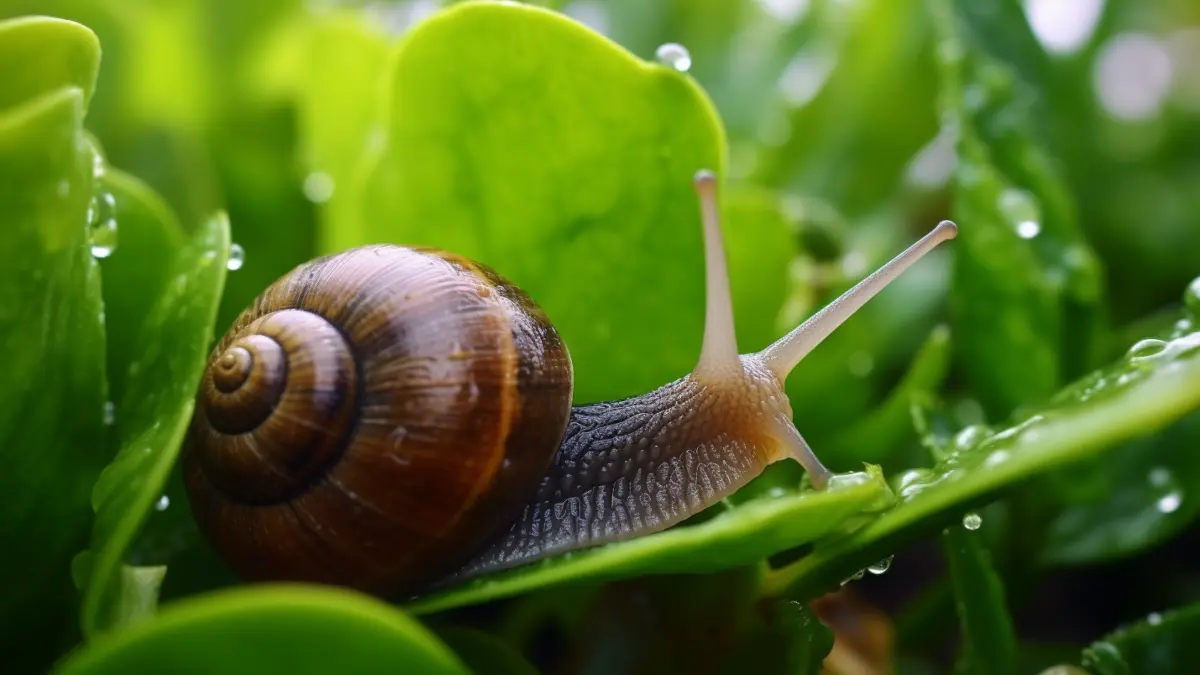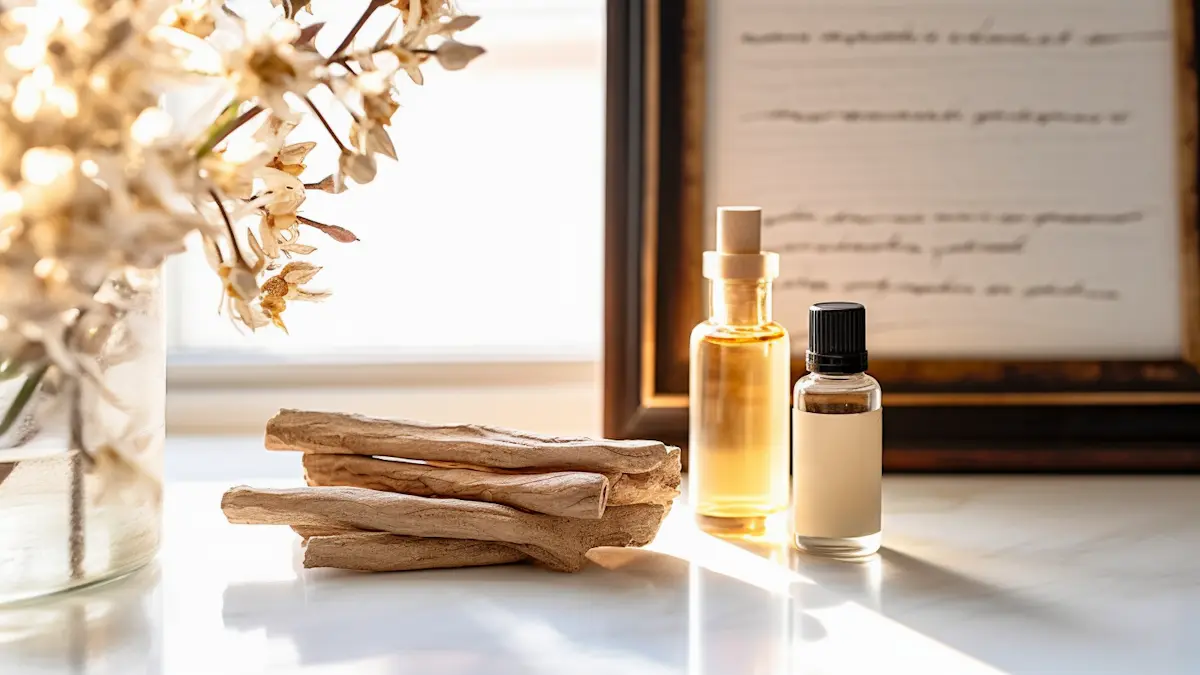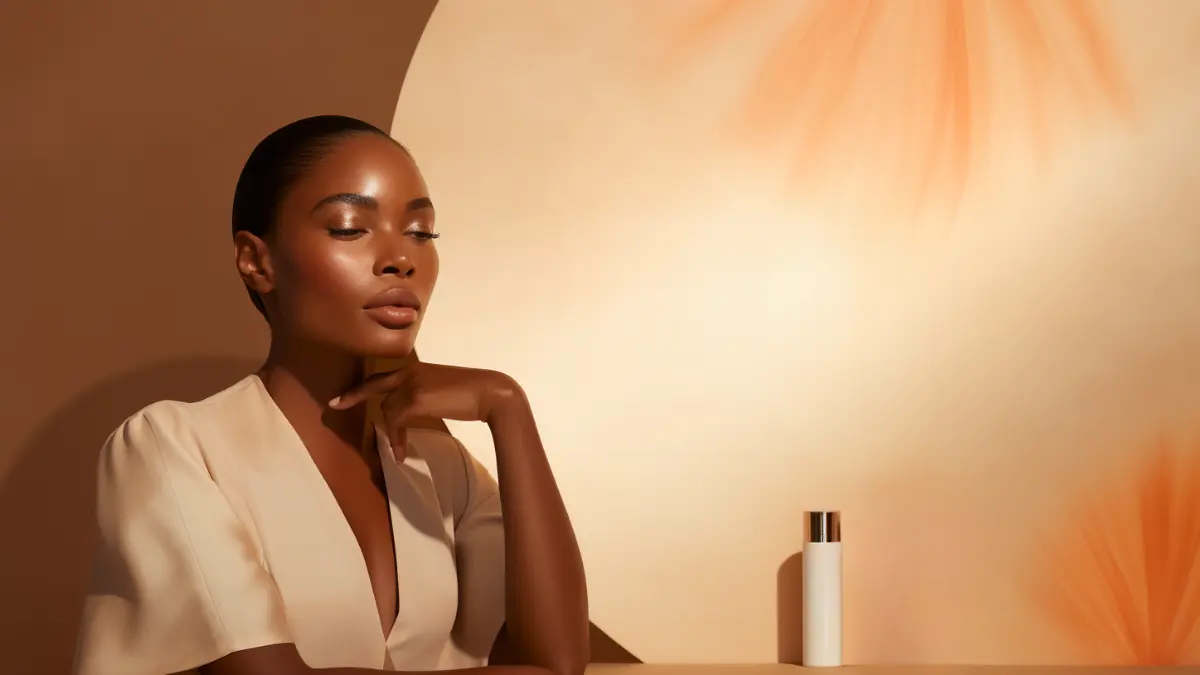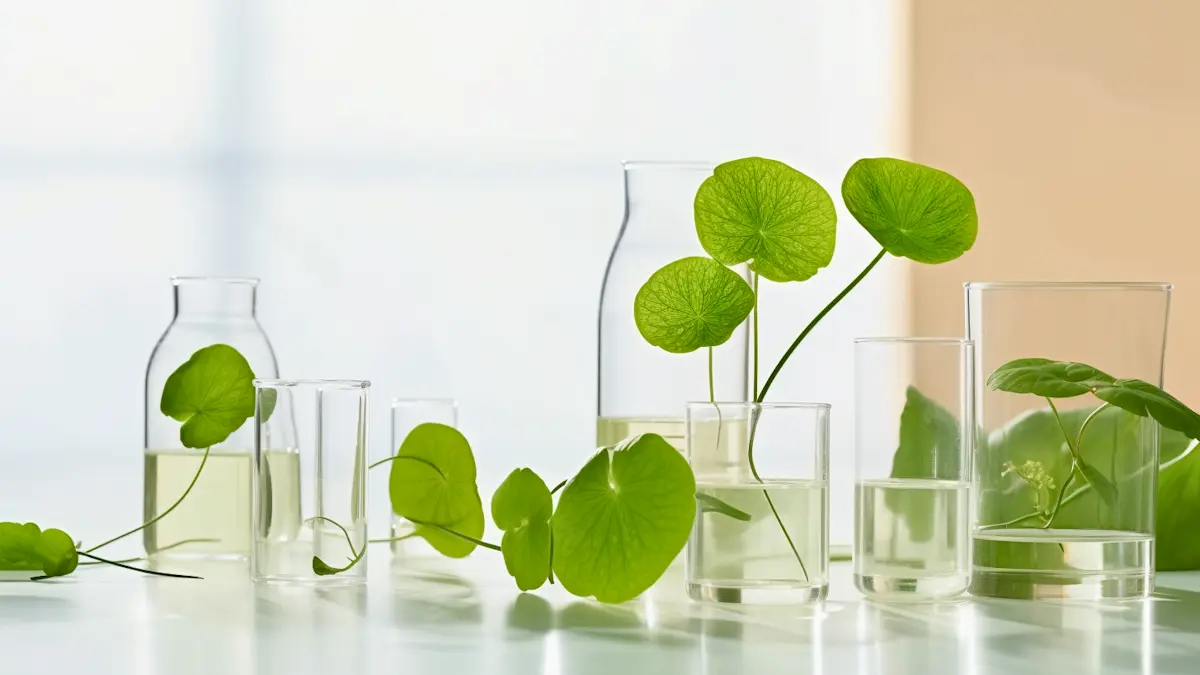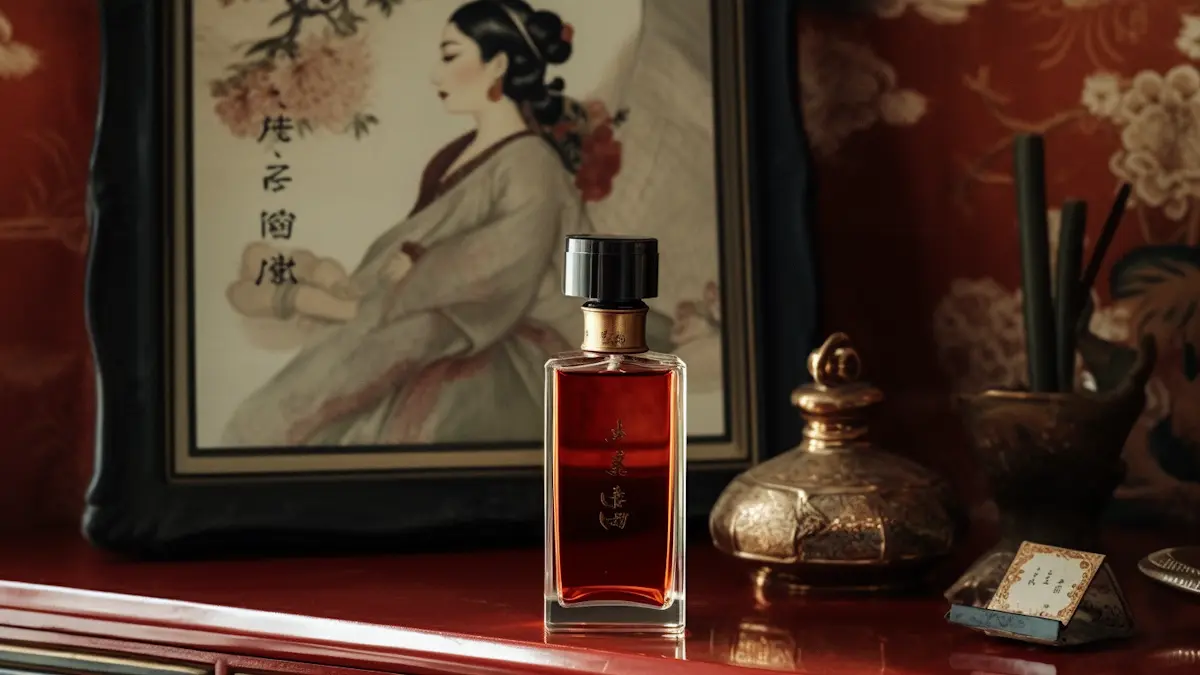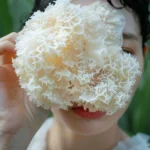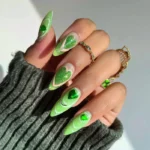Korean beauty products have taken the world by storm with their innovative formulas and high-quality ingredients. Whether you are looking for a gentle cleanser, a hydrating toner, or a nourishing essence, you can find a product that suits your skin type and concerns. One of the reasons why Korean beauty products are so popular is that they are inspired by Korean culture and traditions. Many of them use natural ingredients used for centuries in Korea for their healing and soothing properties.
Say goodbye to the 10-step Korean skincare routine and products that promise ‘glass skin’ because [current_year] is about keeping it clean and simple (yet effective) by incorporating soothing, healing, and protective ingredients into your skincare routine.
I’ve already written about two trending ingredients: heartleaf (Houttuynia Cordata) and ginseng. Today, I want to talk about Artemisia (sometimes called Mugwort), one of the most popular ingredients in Korean skincare. This is shown by how many Mugwort lines pop up (such as those by Hanyul*, Missha*, Isntree*, I’m From*, and Round Lab* – affiliate links).
The Mugwort Guide, at a Glance:
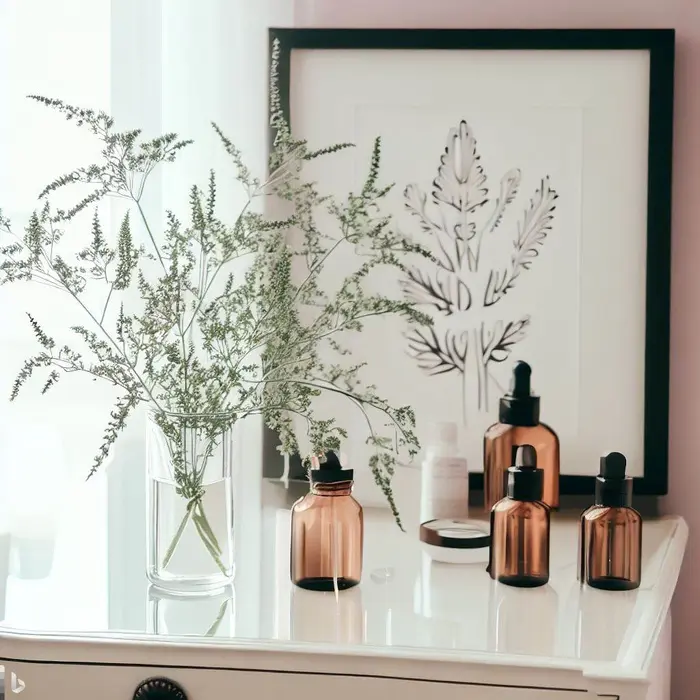
What Is Mugwort?
The Artemisia genus contains hundreds of species. Among them, Artemisia vulgaris, known as mugwort or common wormwood, Artemisia princeps, known as the Japanese mugwort, and Artemisia capillaris, known as capillary wormwood, are known for the powerful chemical constituents in their extracts. The habitats of different Artemisia differ from one another and are widely distributed. Natural habitats of these species are found in Europe, Asia, North Africa, North and South America, and Australia.
Although Mugwort sounds like something that belongs in the Harry Potter world, it’s a medicinal herb commonly used in traditional medicine in China, Korea, and Japan. In particular, it’s used for its anti-inflammatory, antibacterial, and antioxidant effects, which can help treat various skin conditions and improve skin health.
Mugwort is also often used in Korean cuisine. It has a sage-like smell and a bitter taste.
Types of Mugwort
At least 500 different species of Mugwort grow throughout Asia, Northern Europe, and North America, and those that are currently used in skincare products are:
Artemisia absinthium
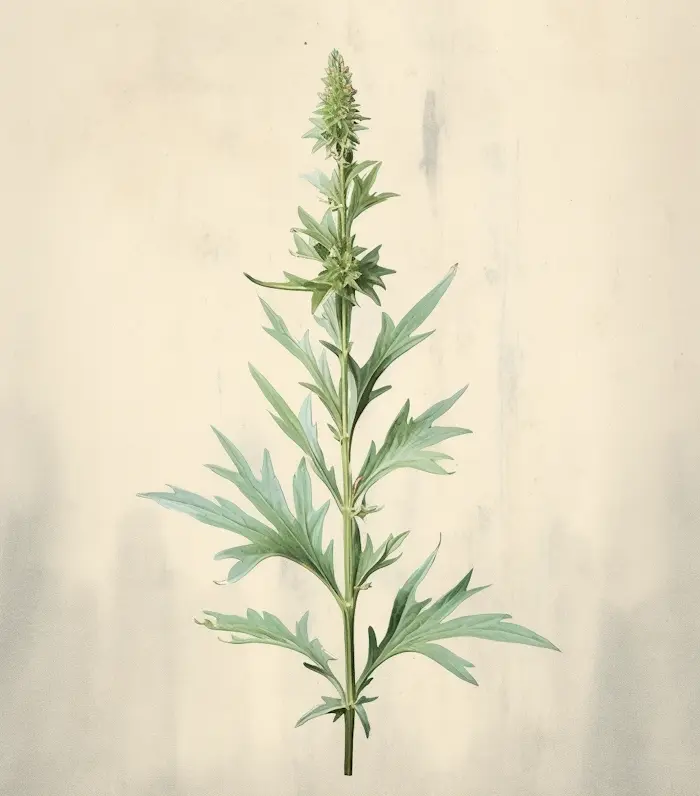
Artemisia absinthium is also known as absinthe wormwood as it’s used as an ingredient in the spirit absinthe. It’s native to temperate regions of Eurasia and northern Africa. Some brands that use this Mugwort species include Dr. Jart, Mizon, and Etude House.
Artemisia Annua
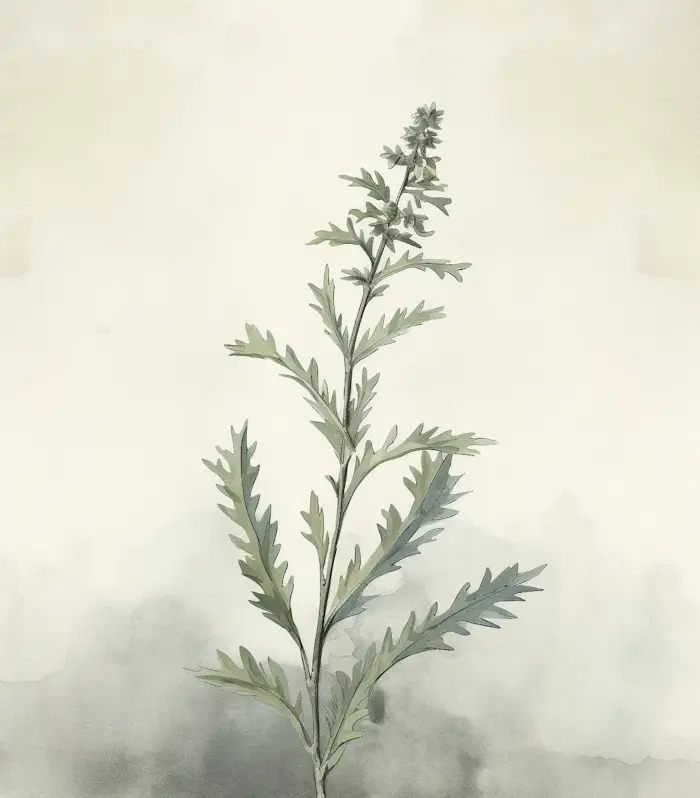
Artemisia annua is also known as sweet wormwood or annual Mugwort. It is native and common in temperate Asia. However, it has been naturalized in many other countries worldwide, including North America. In traditional Chinese medicine, it is used to treat fever. The brand MiSSHA uses this species of Mugwort in their Artemisia line*.
Artemisia Capillaris
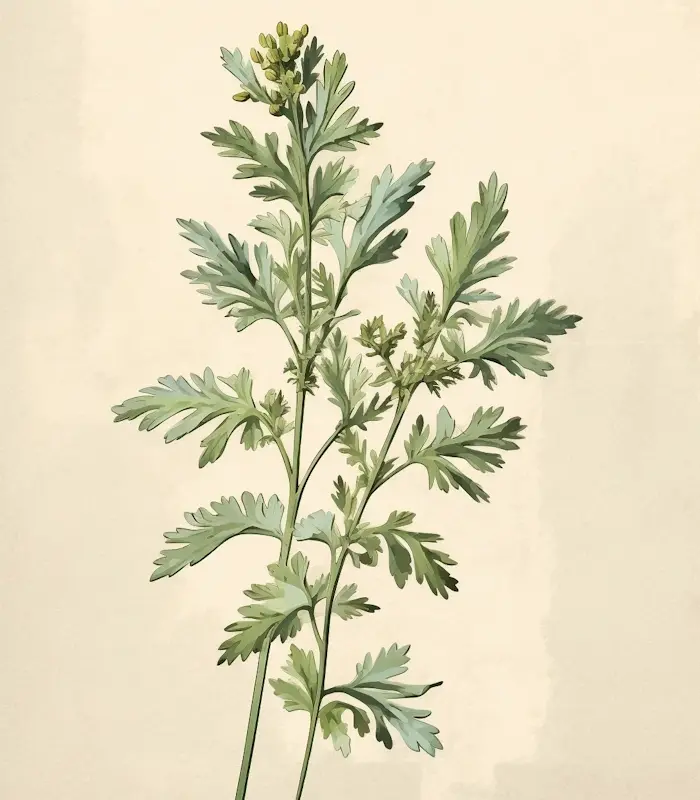
Artemisia capillaris is also called capillary wormwood. It is native to northern Asia and has been widely used as an alternative medicinal herb to improve pain, liver toxicity, inflammation, and jaundice since ancient times. It is one of the species of Mugwort most commonly used in Korean and Japanese skincare products. Beauty of Joseon*, Isntree*, and Vely Vely* use this species in their mugwort lines of products.
Artemisia Princess
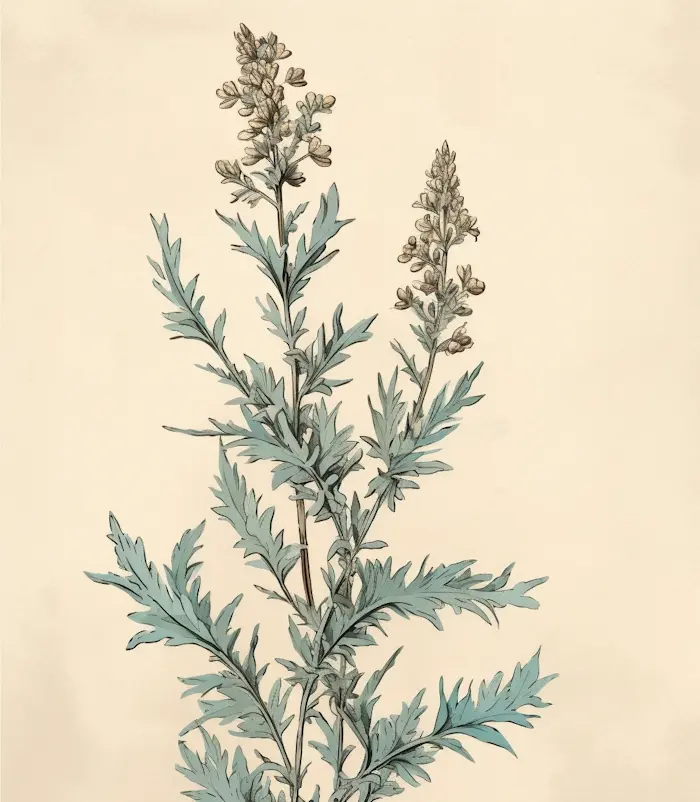
Artemisia princeps is also known as Korean Mugwort or wormwood (ssuk 쑥 in Korean) and Japanese Mugwort (yomogi 蓬 in Japanese). It is native to China, Korea, and Japan and is commonly used as a culinary herb and in traditional medicine. Hanyul, Isntree, Tonymoly, and I’m From use this species in their Artemisia product lines.
Legendary Mugwort
Mugwort, also known as ssuk (쑥) in Korean, has a legend behind its origin. The Tiger and Bear Mugwort Legend is a Korean myth that explains the origin of Korea’s first king, Dangun.
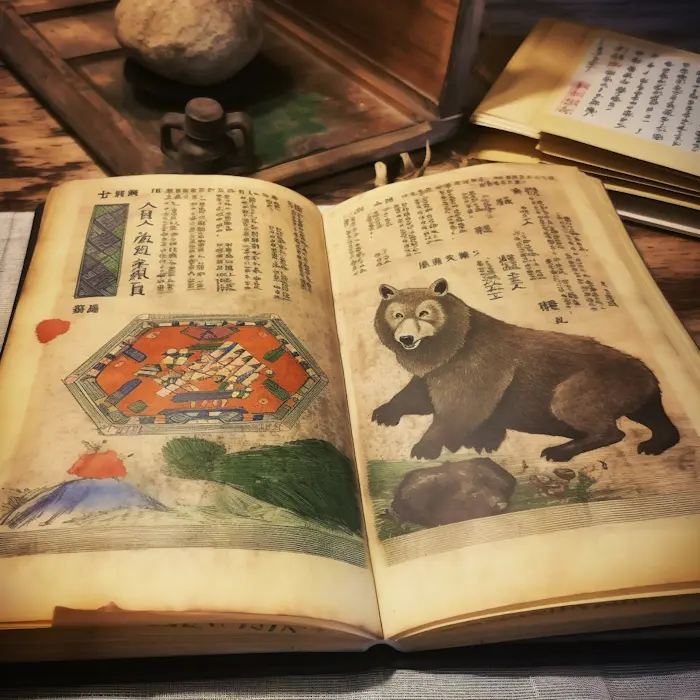
The legend says that one day, the Heavenly God, Hwanin, was bored and decided to spy on his son, Hwanung, who was obsessed with the human world. He peeked through the clouds and saw a beautiful mountain range called Samwi-Taebaek. He thought, “Wow, that looks like a nice place to live. Maybe I should send my son there and see how he likes it.”
According to the legend, a tiger and a bear lived in a cave near the sacred Mount Taebaek. They prayed to Hwanung, the son of Hwanin, the Lord of Heaven, to turn them into humans. Hwanung heard their sincere desires. He put them in a cave with mugwort and garlic and told them to stay there for 100 days. The tiger gave up after 21 days, but the bear persevered and completed the test. The bear was turned into a beautiful woman and married Hwanung. She later gave birth to Dangun, who founded the first Korean kingdom, Gojoseon.

I’m a sucker for myths like that. Maybe if we slather ourselves with Mugwort for 100 days, we can become gorgeous and marry a heavenly prince. Or maybe we could start our movement, like the Mugwortians, and inspire millions of people to follow our beauty tips. How awesome would that be?
In another place and time, Elagabalus, a Roman emperor, bathed in water flavored with rose petals and mugwort.
One of the earliest sources of mugworts’ cosmetic uses is Dioscorides, a Greek doctor and herbalist who lived in the first century AD. He wrote that this plant could help with skin problems such as spots and marks. He also described how to prepare and apply it for this purpose.
The cosmetic applications of mugwort were also mentioned in the Polish herbaria from the Renaissance period, which drew on the writings of ancient and medieval plant experts.
It was a magical protective herb in medieval Europe to ward off evil spirits.
Indigenous people of North America used it to treat skin conditions such as bruises, itching, sores, poison ivy rashes, and eczema.
In the early 19th century, J.B. Trommsdorf, a German pharmacist and professor, mentioned Mugwort in a cosmetic context. He published a book called “Kallopistria, oder die Kunst der Toilette für die elegante Welt”, which contained the first monographs on Artemisia absinthium (a species of mugwort) about their cosmetic use. He recommended mugwort leaves for perfume production and tarragon vinegar as raw materials for cosmetic products.
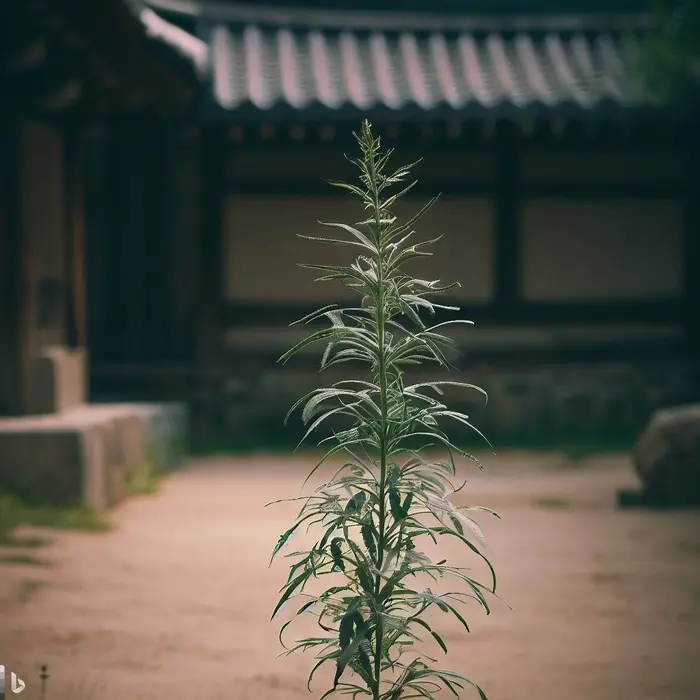
Health Benefits
Mugwort has a long and rich history in many regions worldwide, including Korea, Japan, and China, where it has been used in various culinary dishes and as a medicinal herb to treat various ailments.
Artemisia gained huge research attention in 2015 when the Nobel Prize in medicine was awarded for discovering artemisinin, a component of Artemisia annua that proved its effectiveness in treating malaria. Subsequently, other Artemisia species have gained attention. Mugwort is a versatile herb that can help with various health issues, such as:
Stress and Anxiety
Mugwort can calm the nervous system and promote relaxation. It can also enhance lucid dreaming and creativity.
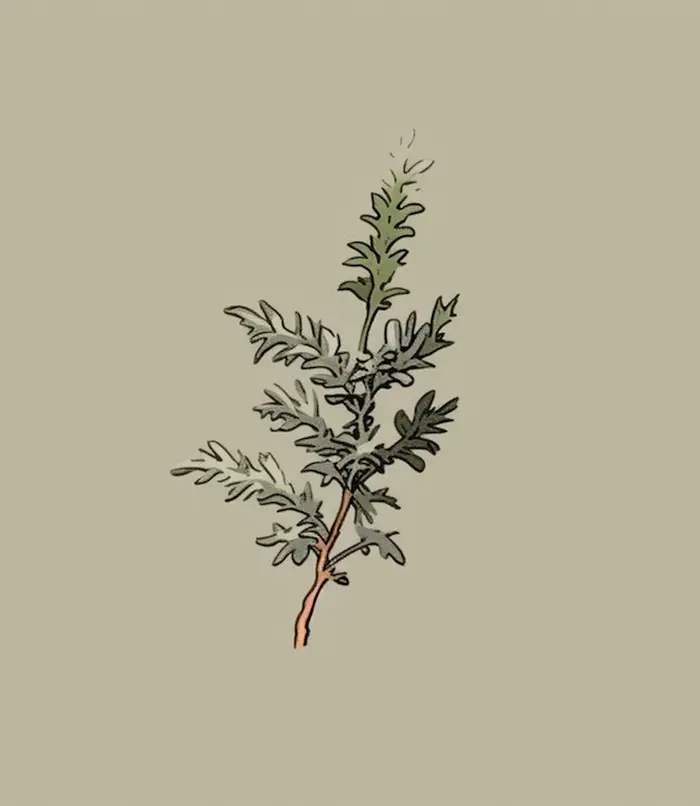
Blood Circulation
Mugwort can stimulate blood flow and prevent blood clots. It can also reduce inflammation and pain.
Digestion
Mugwort can improve appetite, digestion, and bowel movements. It can also relieve stomach acidity, colic, diarrhea, and constipation.
Menstruation
Mugwort can regulate menstrual cycles and ease cramps, bloating, and mood swings. It can also induce labor and prevent postpartum bleeding.
Uses
Mugwort can be used in different ways, such as tea, tincture, oil, powder, or capsule. You can drink mugwort tea to enjoy its internal benefits for your health and wellness. You can use its roots to make tonics that can increase your vitality and its leaves and flowers to treat digestive issues.
One of the most common methods is moxibustion, which involves burning mugwort over specific points on the body to stimulate healing energy. Moxibustion can help with breech births, low back pain, arthritis, and asthma.
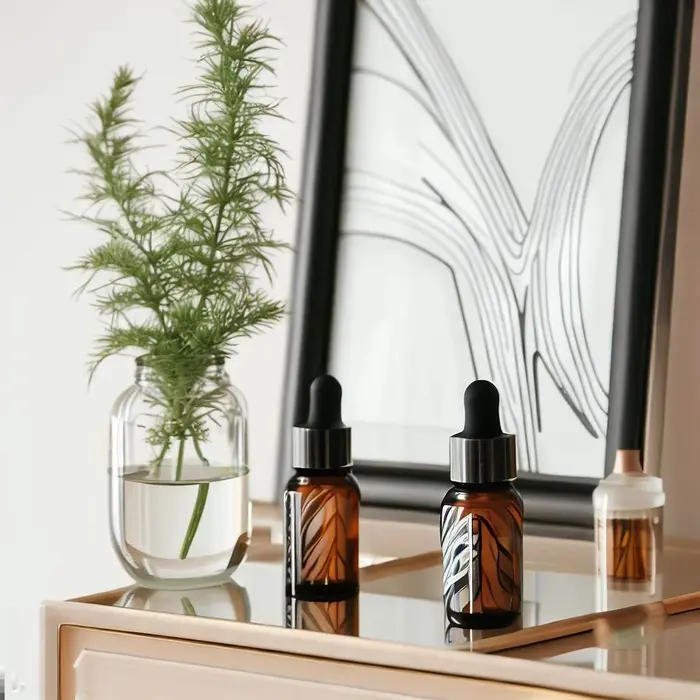
Mugwort Benefits for the Skin
Mugwort is a herb used for centuries in Korea and other parts of Asia for its healing and soothing properties.
Don’t be fooled by its weird name that sounds like a goblin’s curse—or a spell from a famous wizarding saga—this herb is a miracle worker for your skin. Its magical powers can zap away bacteria, fungi, and inflammation. Mugwort benefits the skin by reducing redness, eczema, psoriasis, and other skin woes. It’s a blessing for sensitive skin!
A literature review shows that mugwort species are a rich source of biologically active compounds – mainly polyphenols and volatile components (since Mugwort is a fragrant plant). The chemical constituents found in plants and other naturally-derived ingredients can make them beneficial for sensitive skin but also for acne-prone and dry skin.
These beneficial chemical components are often phenolic compounds, many of which have antioxidant, anti-inflammatory, antibacterial, and anti-fungal properties. Here are some of the Mugwort benefits the skin:
Hydrating
Mugwort is hydrating and gentle on the skin, which makes it perfect for dry and sensitive skin. It can help calm irritation, redness, and itchiness caused by external factors or skin conditions like eczema or psoriasis.
Acne
Studies have shown that this plant can be used to help treat acne. Mugwort has very interesting, scientifically proven activity against P. acnes strains. Mugwort can help fight acne by killing bacteria and reducing inflammation. It can also help balance the oil production and prevent clogged pores.
Anti-aging
Mugwort can help promote cell renewal and improve skin barrier function. It can also help prevent damage caused by ultraviolet rays, leading to wrinkles, sagging, and pigmentation.
Anti-inflammatory
Mugwort can soothe irritated and inflamed skin, such as acne, eczema, psoriasis, and rosacea. It can also reduce redness and swelling caused by sunburns, insect bites, or allergic reactions. Mugwort contains flavonoids and terpenoids, which have anti-inflammatory effects and can modulate the immune system’s response to inflammation.
Anti-bacterial and Anti-fungal
Mugwort can fight against bacteria and fungi that can cause infections and breakouts on the skin. It can also prevent the growth of acne-causing bacteria, such as Propionibacterium acnes and Staphylococcus aureus. Mugwort has antimicrobial activity due to its essential oil components, such as thujone, cineole, and camphor.
The Mugwort will prevent the growth of bacteria and fungi so your skin can heal and recover from inflammation and regenerate new skin cells. Its antimicrobial properties are sure to take care of your acne problems. This also means that acne scars will fade faster due to the absence of unwanted microorganisms and dirt on the skin.
Antioxidant
Mugwort can protect the skin from oxidative stress and environmental damage, such as UV rays, pollution, and free radicals. It can also boost the skin’s natural defense mechanisms and enhance its ability to repair itself. Mugwort is rich in antioxidants, such as vitamins C, E, beta-carotene, and quercetin, which can scavenge free radicals and prevent cellular damage.
Fights Hyperpigmentation
Mugwort can brighten the skin tone and fade dark spots, hyperpigmentation, and acne scars.
It can also improve the skin texture and smooth out fine lines and wrinkles. Mugwort has skin-lightening and anti-aging effects due to its tyrosinase-inhibiting and collagen-stimulating properties.
Cleanses
Mugwort has a cleansing property that removes dirt and oil from your pores. It’s excellent as a toner because it’s an astringent and won’t dry out your skin. Instead, it will soothe it, and your skin will become noticeably clear after using this product. Did you know Mugwort is often used for a nice, relaxing soak in hot springs? Your skin will be at its clearest and most relaxed state.
Stimulates collagen
Mugwort also stimulates the collagen in your skin, reducing the appearance of fine lines on your face. This results in younger, brighter, and more radiant skin. Who wouldn’t want that? It’s no wonder it’s an ingredient that has surpassed the trials of time.
Strengthens the Skin Barrier
The antioxidant properties of Artemisia princeps significantly enhance the expression of two skin barrier proteins – filaggrin and loricrin.
Filaggrin and loricrin are essential to the proper functioning of our skin’s epidermal barrier, and studies have shown that an impaired skin barrier enhances allergen penetration, leading to inflammatory skin diseases such as atopical dermatitis. This could be why Artemisia princeps works so well at treating dry skin symptoms in atopic dermatitis.
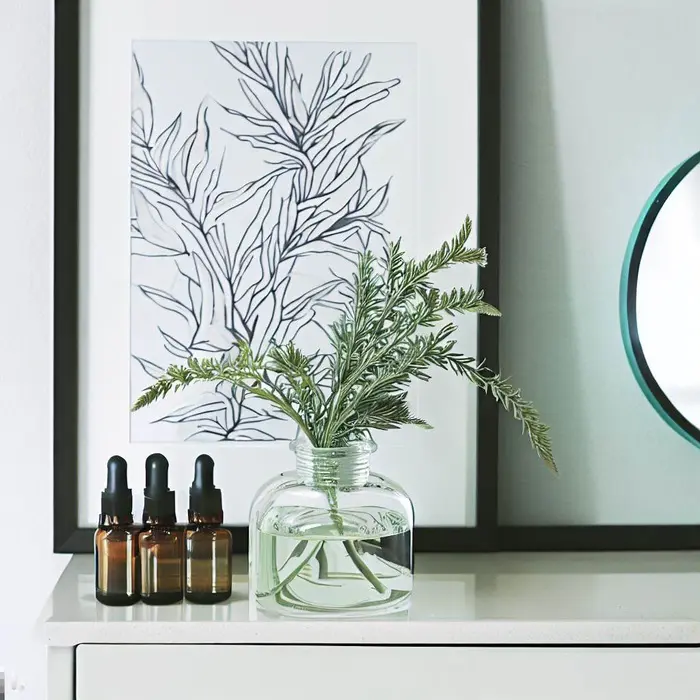
How to Use Mugwort in Skincare
You can find mugwort in various forms, such as tea, oil, extract, powder, mask, cream, toner, mist, essence, and more.
DIY Mugwort for the Skin
Mugwort Toner
One of the easiest ways to use mugwort is to apply it as a toner or a mist. You can make a mugwort toner by steeping dried mugwort leaves in boiling water for 10 minutes. Strain the liquid and store it in a spray bottle. You can also use it as a facial mist or toner by spraying or applying it on your face after cleansing.
Mugwort Oil Cleanser
You can use mugwort oil as a cleanser or moisturizer by massaging it on your face, rinsing it off with water, or leaving it on overnight.
Mugwort Serum
After toning and moisturizing, you can apply mugwort extract as a serum or essence on your face.
Mugwort Scrub
You can use mugwort powder as a scrub by mixing it with water or honey, applying it to your face, and then rinsing it with water.
Mugwort Mask
Another way to use mugwort for skin is to apply it as a mask. You can make your own by mixing mugwort powder with water or honey. Apply it to your face for 15 to 20 minutes and rinse it with lukewarm water.
Is Mugwort Safe?
Many people lean more toward natural ingredients, but natural products are not always safe! When dealing with an ingredient like Mugwort, it’s essential to consider your skin’s sensitivities and the product’s formulation.
Mugwort is generally safe, but it may cause allergic reactions in some people sensitive to chrysanthemums, daisies, or other plants in the Asteraceae and Compositae family. If you see your skin reacting negatively to the product, you can lessen its usage or stop using it entirely.
Mugwort should also be avoided by pregnant women who are not ready to give birth, as it may cause miscarriage or premature labor. Mugwort may also interact with some medications, such as blood thinners or anticonvulsants. Therefore, it is advisable to consult a doctor before using mugwort.
How Did The Korean Skincare Artemisia Trend Start?
I did a little detective work, and the product that started the current Mugwort trend in the Korean skincare industry is the Vely Vely Artemisia Balance Essence*. This essence contains 100% Artemisia capillaris extract, and it became so popular in Korea in early 2019 that retailers such as Olive Young had trouble keeping it on the shelves!
Naturally, other brands followed with their versions of Artemisia essences: Hanyul*, Missha*, Isntree*, I’m From*, and Round Lab*. (*affiliate links)
And it hasn’t stopped there! There is a whole range of skin care products containing artemisia extract available now – including cleansers, toners, serums, ampoules, creams, and masks!
Best Korean Mugwort Skincare Products
The Korean skincare industry is huge at the moment, and they are most certainly leading the way in terms of trends, science, and innovation. There is almost always something new coming from Korea, whether it be a unique plant extract, species of snail, or even another new brand. There is no doubt that there is something for everyone regarding Korean skincare.
1. Round Lab Mugwort Calming Toner
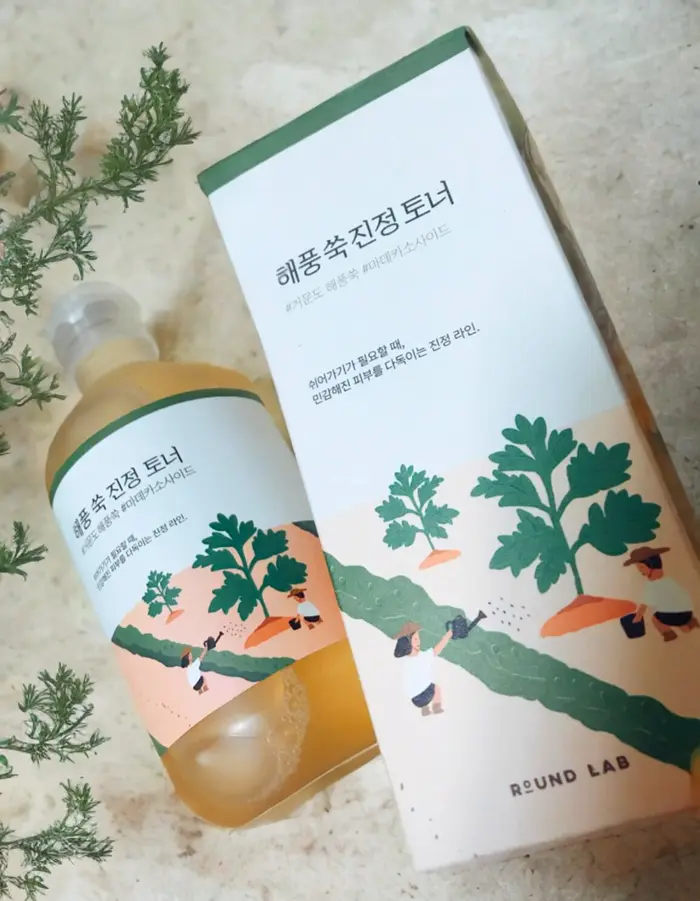
Round Lab Mugwort Calming Toner is made with Artemisia Vulgaris Extract and Artemisia Princeps Leaf Extract, which have anti-inflammatory and soothing properties. It helps calm down redness, itchiness, and flakiness while hydrating and balancing your skin. I love how soft and refreshed my skin feels!
Apart from Artemisia Extracts, this essence contains glycerin, one of the most effective and, therefore, most common humectants used in skincare products. Glycerin is naturally found in the stratum corneum as part of the skin’s natural moisturizing factor. It is, therefore, an extraordinarily safe and non-allergenic skincare ingredient suitable for any skin type.
Read Diana’s Round Lab Mugwort Calming Toner review.
Round Lab Mugwort Calming Toner Ingredients List (last checked [current_year])
Purified Water, Dipropylene Glycol, Glycerin, 1,2-Hexanediol, Glycereth-26, Artemisia Vulgaris Extract (11,760ppm), Chondrus Crispus Extract, Saccharum Officinarum (Sugarcane) Extract, Panthenol, Betaine, Allantoin, Dipotassium Glycyrrhizate, Madecassoside, Xylitol, Artemisia Princeps Leaf Extract(240ppm), Chlorella Vulgaris Extract, Camellia Sinensis Leaf Extract, Salvia Officinalis (Sage) Oil, Theobroma Cacao (Cocoa) Seed Extract, Pentylene Glycol, Propanediol, Polyglyceryl-10 Laurate, Ethylhexylglycerin, Glucose, Butylene Glycol, Fructooligosaccharides, Fructose, Biosaccharide Gum-1, Dextrin, Tocopherol, Carbomer, Xanthan Gum.
Ingredients referred from the Round Lab official website.
Humectant/Moisturizing Active Herb Brightening
2. I’m From Mugwort Essence
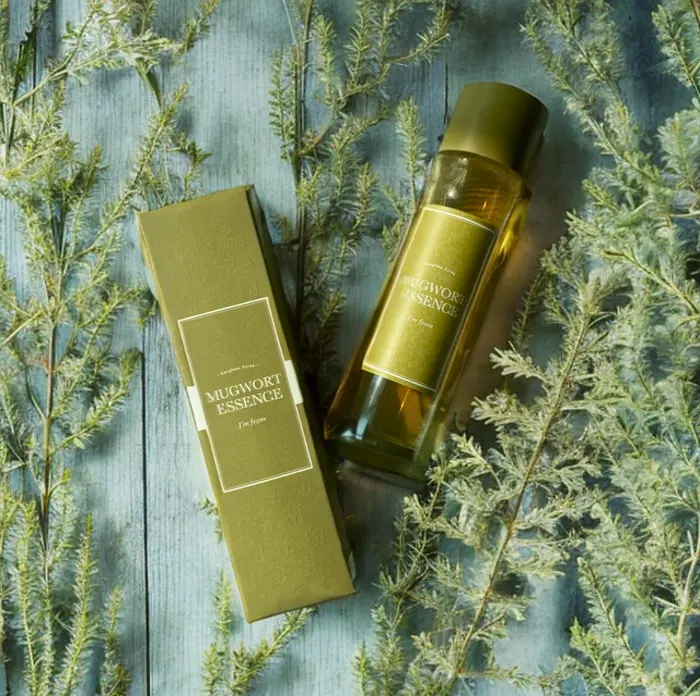
If you want to add mugwort to your skincare routine, we highly recommend checking out the I’m From Mugwort Essence. It contains 100% Artemisia princeps extract from mugwort grown on Ganghwa Island. Just as with the Hanyul Pure Artemisia Watery Calming Cream, the mugwort used in this product has been aged for three years. The Mugwort extract delivers moisture and nutrients to the skin. It also helps balance the skin’s pH and strengthen its barrier function.
How to use this product: I’m From recommends applying their mugwort essence after cleansing and toning using either your hands, soaking cotton pads, or a sheet mask in the essence and then applying that to your face for 5 minutes.
Artemisia Princeps Extract (100%).
Ingredients referred from the I’m From official website.
3. Missha Time Revolution Artemisia Treatment Essence
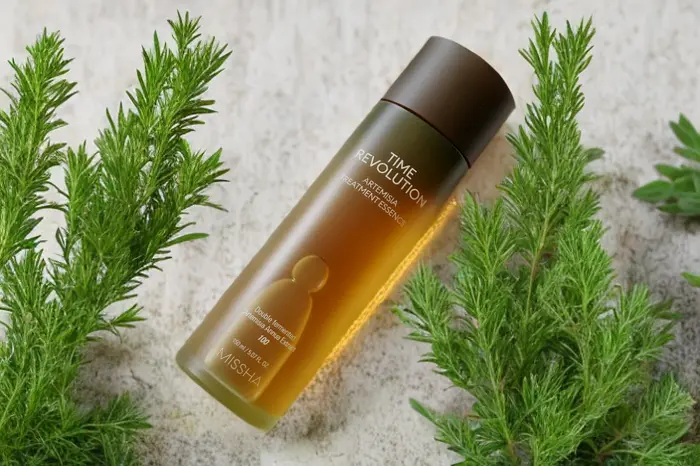
This essence is fermented with double-fermented Artemisia Annua Extract to enhance its potency and absorption. It soothes and moisturizes the skin while improving its texture and clarity.
Missha Time Revolution Artemisia Treatment Essence Ingredients List (last checked [current_year])
Water, Dipropylene Glycol, 1,2-Hexanediol, Propanediol, Artemisia Annua Extract.
Ingredients referred from the MISSHA official website.
Humectant/Moisturizing Herb
4. Hanyul Pure Artemisia Watery Calming Cream
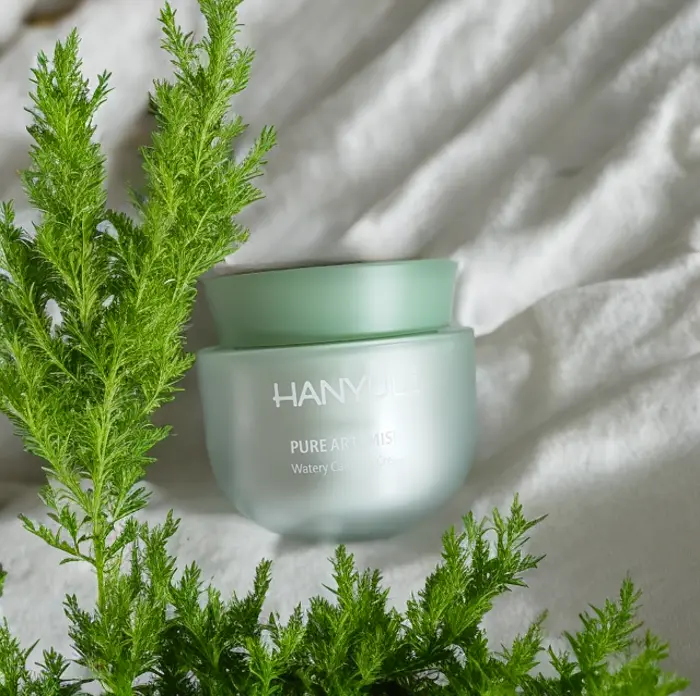
I haven’t mentioned Hanyul often here before, but I found out they are a fantastic Korean skincare brand. Traditional Korean folk remedies inspire their products. Their formulations are a beautiful mixture of soothing hanbang ingredients and the latest Korean skincare technologies.
Through healthy skin balance and inner firmness, you can truly get closer to balanced beauty that doesn’t collapse easily in any problem.
With high-efficiency ingredients found from local raw materials, it instantly solves problems on the skin surface and at the same time builds the fundamental strength to balance the inner and outer surfaces.
Furthermore , we strive to deliver rest and healing at the moment of every experience with a formulation that is comfortable on the skin, a pleasant scent of nature, and the visual pleasure of a package containing Korean aesthetics.
Hanyul
Even Hanyul’s product packaging reflects this. The design of the brand’s packaging is simple yet soothing and beautiful, matching the product formulations perfectly.
Hanyul has an entire mugwort line*, but the Hanyul Pure Artemisia Watery Calming Cream* is fantastic. This cream is enriched with Artemisia extract and ceramides to hydrate and protect the skin from external stressors. It has a lightweight texture that melts into the skin without leaving any greasy residue.
Hanyul Pure Artemisia Watery Calming Cream* contains an extract from Artemisia Argyi leaves harvested from Ganghwa Island and fermented over three years.
Only the upper leaves of the Artemisia argyi plants are used for the Hanyul Artemisia cream as they are said to be more beneficial for the skin as they are exposed to more sunlight.
Water, Glycerin, Butylene Glycol, Methyl Trimethicone, Dicaprylyl Ether, Artemisia Argyi Leaf Extract, Betaine, Cetyl Ethylhexanoate, Hydrogenated Poly(C6-14 Olefin), Glyceryl Polymethacrylate, 1,2-Hexanediol, Glyceryl Stearate Citrate, Cnidium Officinale Root Water, Angelica Acutiloba Root Extract, Ammonium Acryloyldimethyltaurate/VP Copolymer, C14-22 Alcohols, Hydroxyethyl Acrylate/Sodium Acryloyldimethyl Taurate Copolymer, Polymethylsilsesquioxane, Arachidyl Alcohol, Stearic Acid, Glyceryl Stearate, Butyrospermum Parkii (Shea) Butter, Palmitic Acid, Behenyl Alcohol, Dioscorea Japonica Root Extract, C12-20 Alkyl Glucoside, Rubus Idaeus (Raspberry) Fruit Extract, Ulmus Davidiana Root Extract, Arachidyl Glucoside, Fragrance, Ethylhexylglycerin, Salicornia Herbacea Extract, Morus Alba (White Mulberry) Leaf Extract, Angelica Keiskei Extract, Disodium EDTA, Sorbitan Isostearate, Myristic Acid, Lauric Acid, Tocopherol, Glycine Soja (Soybean) Oil.
Ingredients referred from the Hanyul official website.
Humectant/Moisturizing Active Herb Brightening
5. I’m From Mugwort Sheet Mask
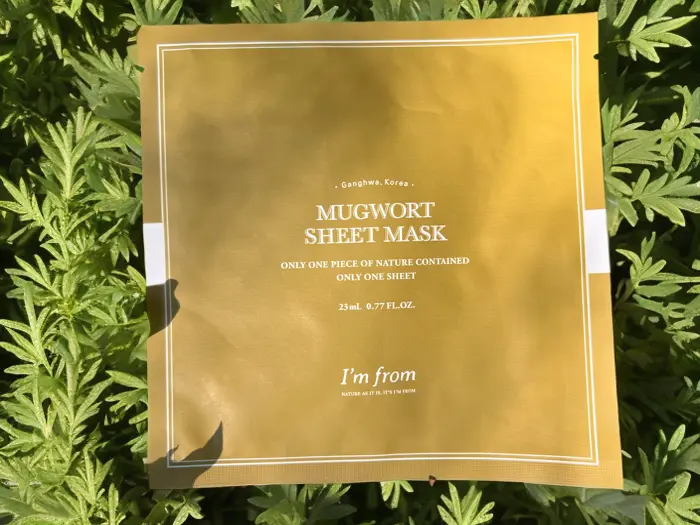
Do you know when you sometimes try foods from other cultures with scents or tastes of textures different from what you may be used to? You may be hesitant to try a particular dish or food at first, but once you do and try to understand some of the culture around it, you enjoy it. But please don’t let this deter you from trying something that can do wonders for your skin! Like the brand’s mugwort essence, the mugwort used in this mask is cultivated on Ganghwa Island in Korea.
Notable ingredients include Cordyceps sinensis extract, a mushroom with anti-inflammatory, skin-brightening, and anti-aging properties.
I’m From Mugwort Sheet Mask, the ultimate savior for dry skin. It has ten essential ingredients, with Mugwort (91.45%) as its main ingredient, making it a soothing mask that will result in hydrated and relaxed skin.
I am putting it on after a long, stressful day. It sounds like heaven! The I’m From Mugwort Sheet Mask can hydrate your skin and is especially good for sensitive skin. You can find I’m From Mugwort Sheet Mask Review here.
I’m From Mugwort Sheet Mask Ingredients List ([current_year] last checked)
Artemisia Princeps Extract, Butylene Glycol, Glycerin, Methylpropanediol, Cordyceps Sinensis Extract, 1,2-Hexanediol, Caprylyl Glycol, Allantoin, Zanthoxylum Piperitum Fruit Extract, Usnea Barbata (Lichen) Extract, Dipotassium Glycyrrhizate, Panthenol, Pulsatilla Koreana Extract, Carbomer, Arginine.
Humectant/Moisturizing Active Herb Brightening
6. Beauty of Joseon Matte Sun Stick Mugwort + Camelia
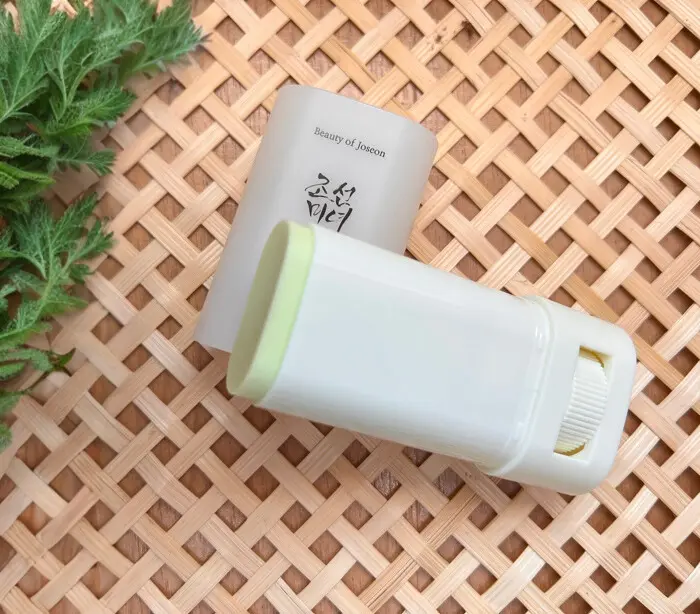
The Beauty of Joseon Matte Sun Stick is convenient for reapplying sun protection during the day. It doesn’t spill or leak. It is also small and portable, so you can easily toss it in your bag and reapply it whenever needed. You don’t even have to use your hands to rub it in. It glides on smoothly and doesn’t interfere with makeup application. I like how it works and how handy it is.
If you’re looking for a broad-spectrum sun stick that protects your skin from UV rays and gives you a satin, matte finish, you should try the Beauty of Joseon Matte Sun Stick! Read Mia’s Beauty of Joseon Matte Sun Stick Mugwort + Camelia review.
Beauty of Joseon Matte Sun Stick Mugwort Camelia Ingredients List (last checked [current_year])
Methyl Methacrylate Crosspolymer, Synthetic Wax, Dibutyl Adipate, Coco-Caprylate/Caprate, Isopropyl Palmitate, Caprylyl Methicone, Caprylyl Trimethicone, Ethylhexyl Palmitate, Silica, Vinyl Dimethicone/Methicone Silsesquioxane Crosspolymer, Diethylamino Hydroxybenzoyl Hexyl Benzoate, Bis-Ethylhexyloxyphenol Methoxyphenyl Triazine, Boron Nitride, Butyloctyl Salicylate, Ethylhexyl Triazone, Microcrystalline Wax, Polysilicone-15, Vinyl Dimethicone, Camellia Japonica Seed Oil, Curcuma Longa (Turmeric) Root Extract, Melia Azadirachta Flower Extract, Melia Azadirachta Leaf Extract, Corallina Officinalis Extract, Melia Azadirachta Bark Extract, Ocimum Sanctum Leaf Extract, Moringa Oleifera Seed Oil, Coccinia Indica Fruit Extract, Solanum Melongena (Eggplant) Fruit Extract, Amber Powder, Aloe Barbadensis Flower Extract, Simmondsia Chinensis (Jojoba) Seed Oil, Artemisia Capillaris Extract, Camellia Sinensis Leaf Extract, Camellia Sinensis Seed Oil, Hyaluronic Acid, Bambusa Vulgaris Extract, Centella Asiatica Extract, Morinda Citrifolia Extract, Vigna Radiata Seed Extract, PolyglycerylDiisostearate/Polyhydroxystearate/Sebacate, Water, 1,2-Hexanediol, Panthenol, Butylene Glycol, Propanediol, Glycerin, Methylpropanediol, Ethylhexylglycerin.
Ingredients referred from the Beauty of Joseon Official Website.
Sunscreen filter Moisturizer/Humectant Herbal
Final Thoughts
Mugwort is a beautiful herb that can benefit your skin in many ways. It can help soothe, hydrate, heal, protect, and rejuvenate your skin. If you have sensitive, dry, acne-prone, or aging skin, you might want to give mugwort a try. You can find many skincare products that contain mugwort or make your own.
The scientific evidence for mugwort’s benefits on the skin isn’t pervasive yet, and more research is definitely needed. However, after reading so many reviews while researching this article, I think it can’t be denied that mugwort is a worthy ingredient to include in your skincare routine.
Give it a chance to work its miracle, and you’ll emerge as a radiant, hydrated, relaxed, clear-skinned champion like the beautiful woman from the legend.
Remember to patch test any new product before using it on your face, and consult your dermatologist if you have any concerns or allergies.
Show Me Proof
- Syreński, S. “Herbarium is an armorial from the Latin language.” It is a self-description of names, shape, nature, and the effectual power of all kinds of herbs, trees, shrubs and roots […], Kraków 1613.
- Drobnik, Jacek, and Karolina Wełna. “Cosmetic plants of the early 19th century.” Polish J Cosmetol 20, no. 4 (2017): 349-358.
- Garcia, Lea C. “A Review of Artemisia annua L.: Its genetics, biochemical characteristics, and anti-malarial efficacy.” Int. J. Sci. Technol 5, no. 2 (2015): 38-46.
- Mahmoudi, M., M. A. Ebrahimzadeh, F. Ansaroudi, S. F. Nabavi, and S. M. Nabavi. “Antidepressant and antioxidant activities of Artemisia absinthium L. at flowering stage.” African journal of Biotechnology 8, no. 24 (2009).
- Ahamad, Javed. “A pharmacognostic review on Artemisia absinthium.” International research journal of pharmacy 10, no. 1 (2019): 25-31.
- Yun, Chanyong, Youngchul Jung, Wonjoo Chun, Beodeul Yang, Junghyun Ryu, Chiyeon Lim, Jung-Hoon Kim, Hyungwoo Kim, and Su-In Cho. “Anti-inflammatory effects of Artemisia leaf extract in mice with contact dermatitis in vitro and in vivo.” Mediators of Inflammation 2016 (2016).
- Hirano, Akiko, Masashi Goto, Tsukasa Mitsui, Akiko Hashimoto-Hachiya, Gaku Tsuji, and Masutaka Furue. “Antioxidant Artemisia princeps extract enhances the expression of filaggrin and loricrin via the AHR/OVOL1 pathway.” International journal of molecular sciences 18, no. 9 (2017): 1948.
- Stewart, Susan. Painted faces: A colourful history of cosmetics. Amberley Publishing Limited, 2017.
- Elansary, Hosam O., Agnieszka Szopa, Paweł Kubica, Halina Ekiert, Diaa O. El-Ansary, Fahed A. Al-Mana, and Eman A. Mahmoud. “Polyphenol content and biological activities of Ruta graveolens L. and Artemisia abrotanum L. in northern Saudi Arabia.” Processes 8, no. 5 (2020): 531.
- Iqbal, Shahid, Umer Younas, Kim Wei Chan, Muhammad Zia-Ul-Haq, and Maznah Ismail. “Chemical composition of Artemisia annua L. leaves and antioxidant potential of extracts as a function of extraction solvents.” Molecules 17, no. 5 (2012): 6020-6032.
- Hrytsyk, Roman Andriiovych, Roman Volodymyrovych Kutsyk, Oxana Ivanivna Yurchyshyn, Оxana Аnatolievna Struk, Igor Vladimirovich Kireev, and Andrii Romanovych Grytsyk. “The investigation of antimicrobial and antifungal activity of some Artemisia L. species.” Pharmacia 68, no. 1 (2021): 93-100.
- Nigam, Manisha, Maria Atanassova, Abhay P. Mishra, Raffaele Pezzani, Hari Prasad Devkota, Sergey Plygun, Bahare Salehi, William N. Setzer, and Javad Sharifi-Rad. “Bioactive compounds and health benefits of Artemisia species.” Natural product communications 14, no. 7 (2019): 1934578X19850354.
- Kim, Byung Eui, and Donald YM Leung. “Significance of skin barrier dysfunction in atopic dermatitis.” Allergy, asthma & immunology research 10, no. 3 (2018): 207-215.

